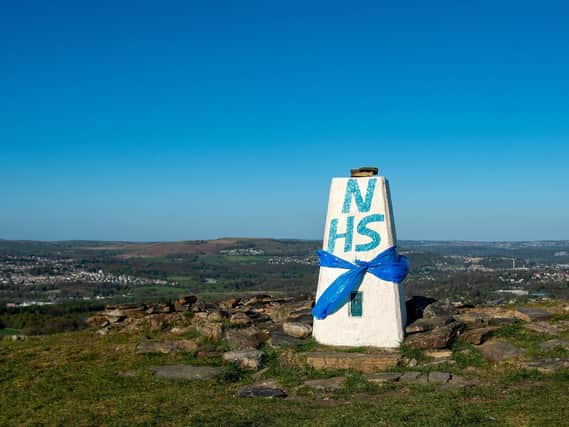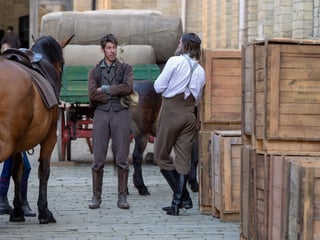Trig point used in mapping Britain now a beacon of thanks for NHS


Largely redundant in modern times, they remain a popular sight amongst walkers - and this one has been decorated in support of the NHS during the Coronavirus pandemic.
Located on Norr Hill, above Cottingley village in the suburbs of Bradford, the trig point has been wrapped in blue material and painted with the letters NHS. It joins thousands of other tributes up and down the country, such as rainbows and graffiti art, that recognise the tireless efforts of those working in the healthcare sector throughout the outbreak.
Advertisement
Hide AdAdvertisement
Hide AdTrig pillars were first used in the retriangulation of Great Britain on April 18, 1936. Up until this point, map-making had been based on a collection of observations between 1783 and 1853.
Triangulation is a mathematical process that made that possible. It involves determining the location of a point by measuring angels to it from various known points.
That’s where the trig pillars came in. More than 6,500 of them were installed at locations across the country to act as the known points in the mapping process.
On the 80th anniversary of the trig pillars being used, in April 2016, national mapping agency Ordnance Survey published a series of blog posts about their history.
Advertisement
Hide AdAdvertisement
Hide AdOne read: “OS surveying teams spent 26 years gathering measurements across Britain to create a highly accurate map of the country, but time and technologies have moved on enormously to the point where the traditional trig pillar is now obsolete in its original guise.
“They still act as a beacon for many an outdoors lover, but they no longer help shape our maps.”
Today, this one is becoming part of history again as a beacon of thanks during an unprecedented global crisis that will undoubtedly be remembered for years to come.
Editor’s note: first and foremost - and rarely have I written down these words with more sincerity - I hope this finds you well.
Advertisement
Hide AdAdvertisement
Hide AdAlmost certainly you are here because you value the quality and the integrity of the journalism produced by The Yorkshire Post’s journalists - almost all of which live alongside you in Yorkshire, spending the wages they earn with Yorkshire businesses - who last year took this title to the industry watchdog’s Most Trusted Newspaper in Britain accolade.
And that is why I must make an urgent request of you: as advertising revenue declines, your support becomes evermore crucial to the maintenance of the journalistic standards expected of The Yorkshire Post. If you can, safely, please buy a paper or take up a subscription. We want to continue to make you proud of Yorkshire’s National Newspaper but we are going to need your help.
Postal subscription copies can be ordered by calling 0330 4030066 or by emailing [email protected]. Vouchers, to be exchanged at retail sales outlets - our newsagents need you, too - can be subscribed to by contacting subscriptions on 0330 1235950 or by visiting www.localsubsplus.co.uk where you should select The Yorkshire Post from the list of titles available.
If you want to help right now, download our tablet app from the App / Play Stores. Every contribution you make helps to provide this county with the best regional journalism in the country.
Sincerely. Thank you.
James Mitchinson
Editor
